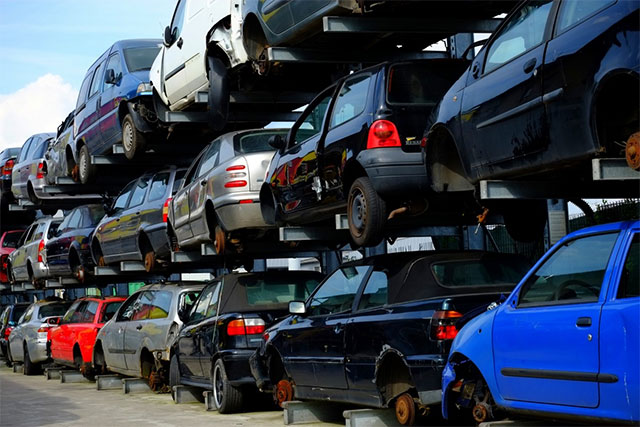It is imperative for any metal to satisfy several criteria in order to be used in automobiles. An ideal metal will be one which helps to ensure the safety of the passengers, the proper performance of the vehicle, and efficiency in the consumption of energy. Besides this, one also has to consider other factors such as environmental safety while making use of metals in vehicles. As a matter of fact, steel qualifies in the majority of these parameters and is extensively used in automobiles at present. Apart from this, it is flexible as well as affordable. It is possible to mold steel in different ways for satisfying various requirements. AISI D2 steel and AISI H13 steel as good material for the mould steel type, they are being used widely in the automobile industry. In excess of 60% of the vehicles are manufactured from steel. Nevertheless, this metal is available in different types and all of them are not appropriate for cars. In the following paragraphs, we will mention some types of steel which are used in vehicles.

Table of Contents
1. AHSS (Advanced High Strength Steel)
At present, the number of vehicles is increasing on the road which results in the pollution of our environment as well as other challenges. Consequently, there is a need for vehicles made from higher strength steel. The steel industry has introduced AHSS for satisfying various challenges. It is the most recent type of steel utilized for vehicles. As compared to conventional steel, it provides a number of advantages some of which we have mentioned below.
- Helps to manufacture lighter and safer automobiles for meeting the safety as well as fuel economy regulations
- It helps to save plenty of mass by using less material
- Although it is being manufactured at thin gauges, it is nevertheless quite sturdy
- It is known for being crashworthy
It has been almost a decade since this type of steel is used in vehicles. Of course, it has been improved and improvised for fulfilling the altering regulations and demands. There are several categories of AHSS which are First Generation AHSS, Second Generation AHSS, and Third Generation AHSS.
While the first category of AHSS comes with restricted formability, the second generation is quite strong in spite of being somewhat pricey. The reason for this is that it consists of expensive alloying elements. There was a need for an innovative version of AHSS because of the limitations of the initial 2 versions, and the third generation AHSS was introduced on the market. It is quite cost-effective and also provides remarkable strength as well as formability.
2. Stainless steel
Stainless steel is actually an alloy of iron and carbon. As compared to traditional steel, stainless steel will not stain, corrode, or rust. Because of this, most of the components of the vehicle are manufactured using stainless steel. In fact, this type of steel is used in many components of the car including the outer panel, exhaust, wipes, trims, engines, and so on. The exhaust system is usually subjected to high temperature as well as corrosive gases and it should be using a substance that will be able to endure these conditions. In that case, stainless steel will be a perfect choice. Apart from this, exhausts made from stainless steel are able to withstand oxidation.
Besides this, stainless steel is likewise employed on other vehicle components such as pump bodies, windscreen wipers, head gaskets, hose clamps, seatbelts springs, and so on. Furthermore, the vehicle’s suspension system is also manufactured using stainless steel which helps to save approximately 25% of the system’s original weight thus making it quite light in the long run. In recent times, quite a few vehicle manufacturers have been exhausting all possible means for searching for the application of stainless steel on automobiles that will result in lesser weight as well as higher stiffness. It is yet to be seen whether the entire vehicle is manufactured from stainless steel in the future.
3. Mild steel
This type of steel consists of one microstructure known as ferrite and is quite simple to form. Once it had been the most commonly utilized material for manufacturing car bodies. Nevertheless, at present, it is mainly used for manufacturing cosmetic components as well as those which are stiffness-related.
4. High strength steel
It has been a long time since HSS is used for manufacturing automobiles. It is available primarily in 3 varieties, namely, Bake Hardening steel, Carbon Manganese steel, and High Strength Low Alloy steel. However, at present, this type of steel has been replaced by Advanced High Strength Steel when it comes to manufacturing vehicles.
According to the science data, every car almost needs 900KG steel. Maybe you will ask: what other metal can replace steel? I think there is no material can do that right now. Because the steel price is lower than other material. The aluminum is lighter than steel, but the price is higher. People use the ability of steel to manufacture automotive chassis, body panel and others. At the condition of technology high speed develop, high strength steel can satisfy the needs of car become lighter and stronger. Comparing with other metal material, steel has the best economic benefit.













